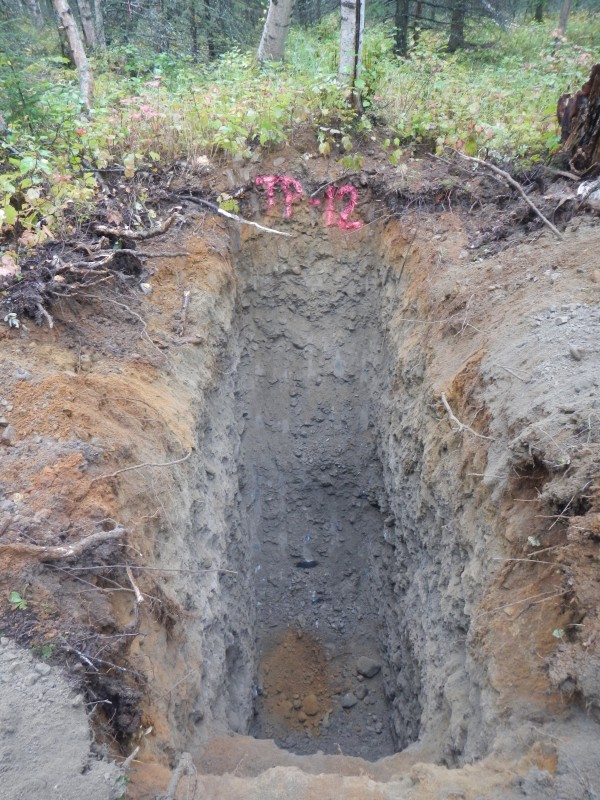Oftentimes, factors such as project budget, site access, subsurface composition, and/or drill rig availability, make geotechnical soil boring/coring methods impractical, inappropriate, and/or cost-prohibitive. Therefore, we often employ mechanical excavating equipment to conduct subsurface explorations in the form of open test pit excavations. Excavation equipment is fairly commonplace (even in more remote areas), relatively inexpensive to operate, and tracked excavators (with skilled operators) can negotiate almost any type of terrain. Therefore, mechanical excavators play an important role in geotechnical exploration.
Test pit excavations can reveal a lot of visual information about the shallow subsurface that soil boring/coring cannot, including (but not limited to):
- Vertical and horizontal material contacts;
- Actual particles size of large-diameter soil particles (i.e., gravel/cobble/boulders);
- Nature and extent of any buried debris;
- Differentiate between bedrock and large boulders in the shallow subsurface;
- The collection of large (bulk) samples.
However, test pit excavations have several drawbacks, including (but not limited to):
- Excessive ground disturbance;
- Limited exploration depth (depending upon equipment size and excavation footprint);
- Lack of ability to conduct in-situ geotechnical testing/sampling such as SPT/MPT, Shelby tubes, etc.


